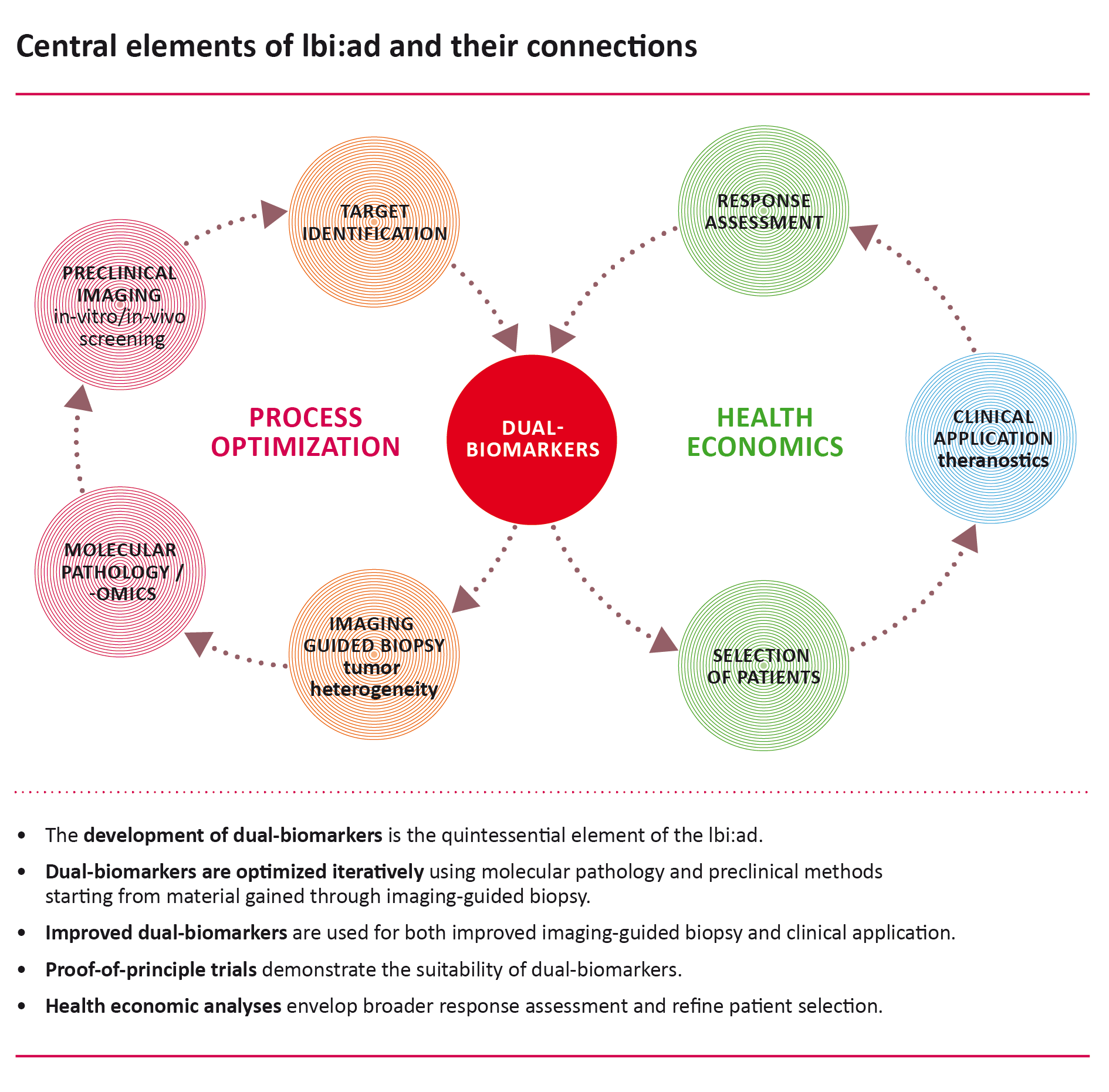Mission
The Ludwig Boltzmann Institute Applied Diagnostics (lbi:ad) is a translational research institution.
The primary goal of the lbi:ad is the identification and validation of novel “dual (modality) biomarkers” that combine molecular biology and imaging technologies allowing for minimal-invasive tumor diagnostics.

